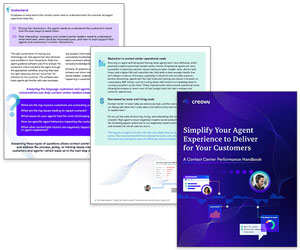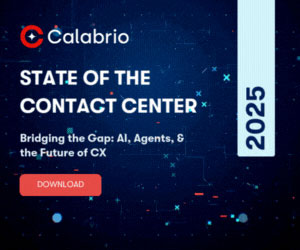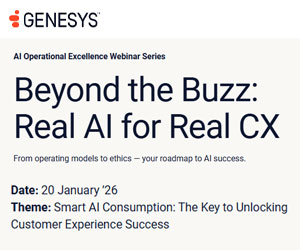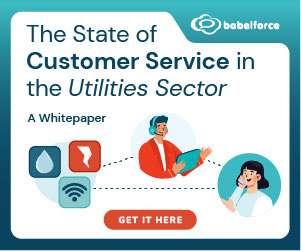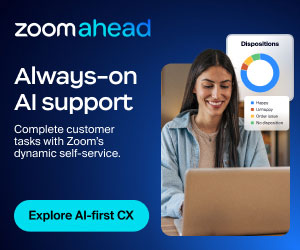Customer service is the backbone of any business, and getting it right starts with strong foundations.
To find what contact centres can do, we asked Alex Mead, to explain how to build a system that ensures you meet customer needs efficiently and effectively.
Video: How to Get EPIC Customer Service Right
Watch the video below to hear Alex outline what companies have to do to get EPIC customer service right:
With thanks to Alex Mead, for contributing to this video.
5 Steps to Delivering EPIC Customer Service
1. Build a Solid CRM Foundation
At the heart of great customer service lies a reliable CRM system. This system must record every customer interaction and connect seamlessly with backend platforms. This linkage allows you to access meaningful data and respond effectively.
“There should be no such thing as digital transformation, digital is just a channel. And if you think about it, you can have the most amazingly attractive websites and you can have natural language, but to me, everything in customer experience needs to start with a foundation.
And the foundation is you need a CRM system, something to record all the interactions on, and you need that CRM system to be linked to other backend platforms so you can pull meaningful data through. But what you need to do is make sure there’s a foundational structure.”
Organise customer enquiries into a hierarchy of primary, secondary, and even tertiary reasons.
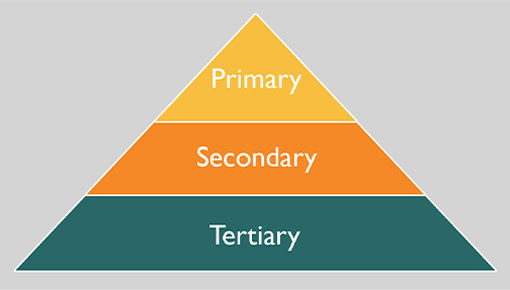
For example, in the case of an airline:
- Primary reason: Is the query about a flight they want to book, a flight they’ve booked, or one they’ve already taken?
- Secondary reason: For a flight already taken, is it about a delayed flight claim, lost luggage, or transport from the airport?
“And it’s a crazy rule of thumb, I’ve no idea how it happens, but I’ve never been in an organization where there are more than 6 to 8 primary reasons why a customer wants help. And if you think about primary and secondary, we’ll stick with the airline.
Okay, is your question about a flight you’ve booked, a flight you want to book, or a flight you’re about to take, a flight you’re on, or a flight you’ve taken. It will only be one of those, won’t it, so think about it, it’s one of those.
And then you click ok it’s a flight I’m about to take. What possible secondary questions could you have from that? And then a flight I’ve already taken. Okay. What possible questions could you ask about that? It could be a delayed flight claim. It could be a lost bag. It could be how do I get a taxi at the airport.”
Mapping these reasons creates a framework that simplifies how customer interactions are recorded and handled.
2. Align Systems Across All Channels
Consistency is key. Ensure your website, app, and chatbot mirror the structure of your CRM system. This alignment ensures a seamless experience regardless of how customers reach out, as Alex explains:
“Think of all these things and create that hierarchical tree for primary reasons, secondary reason, and if you need it, tertiary reasons, make that the framework of your CRM systems.
Every interaction is recorded with a primary, secondary, and potentially tertiary reason. So a customer that goes to your website, or your app, talks to a chatbot, needs to have the same structure as your CRM system.
Is your question about a new flight, an existing flight, a lost bag? And you can just click those two (or three) icons and then you already have 90% of the reason why that customer wants to talk to you.
And that’s when you have to be intuitive and say, right, this customer is asking this about a flight they’ve already taken and a lost bag claim or lost bag update.
What do we already know about that? And it’s terrible, ah yeah, we can see the customer raised a complaint two days ago, you know, so think about that.
But then that’s the nuts and bolts. It’s the foundation.”
For example, if a customer queries lost luggage, your system should immediately provide context – such as a claim raised two days ago – and prompt relevant next steps.
3. Focus on Context
Beyond the technical foundation, understanding context is crucial, as Alex continues:
“Then going to context, what if someone says in that lost bag is my daughter’s wedding dress. That’s a different context to I lost my bag with my pants and underwear and socks for holiday in Magaluf.
And you know, you have to put the foundation in before you do the clever stuff on top, because otherwise every customer’s going to say they have the most complicated issue in the world. It’s so stressful for me.
So put the foundation in and then think to yourself, think of the personas, the types of customer situations you have. Not every customer, but the customer situation.
A mother with three toddlers and a baby who’s stuck at an airport, flying economy class is going to have different needs to a businessman who is sat in the business lounge. But they can have the same type of issues.”
Tailor your service to reflect the situation, showing empathy and building trust. Similarly, consider customer personas.
While the issues may be similar, responses should reflect these differing contexts.
4. Identify Golden Moments
Certain situations present opportunities to go above and beyond. For instance, helping a customer rebook a missed flight or prioritising a claim for a critical event.
Not every case will warrant special action, but recognising these “golden moments” can create lasting loyalty.
“Think of all the situations where you have the primary and secondary contact reason and then what are the potential golden moments in that. Missed a flight, the thing that they need to get the next flight is vitally important.
And then you can make the call on is this something we should do something special about?
Sometimes you may say no, sorry we can’t help, it’s not our fault, or it’s not in our realm of capability to fix it. But you need to identify those and then build everything around that structure.”
5. Start Simple, Then Build Smart
Lay the groundwork before diving into advanced solutions. Begin with a strong framework for managing interactions and understanding customer needs.
From there, you can introduce personalisation and proactive service strategies that truly elevate the experience.
By focusing on structure, context, and empathy, you can transform customer service from a transactional process into a memorable experience.
If you are looking for more great insights from the experts, check out these next:
- How ChatGPT Will Change the Agent Role and CX
- The Difference Between ChatGPT, LLMs, and Generative AI
- EPIC Customer Service Explained
- A Quick Introduction to ChatGPT
Author: Robyn Coppell
Reviewed by: Hannah Swankie
Published On: 6th Jun 2023 - Last modified: 12th Jun 2025
Read more about - Video, Alex Mead, Customer Experience (CX), Customer Journey, Customer Service, Videos















